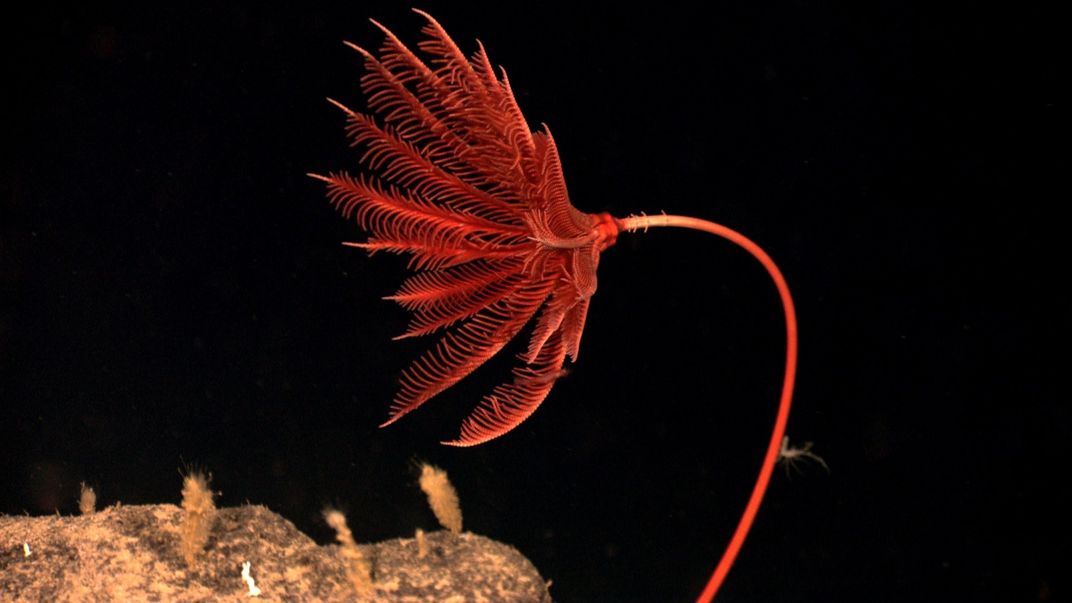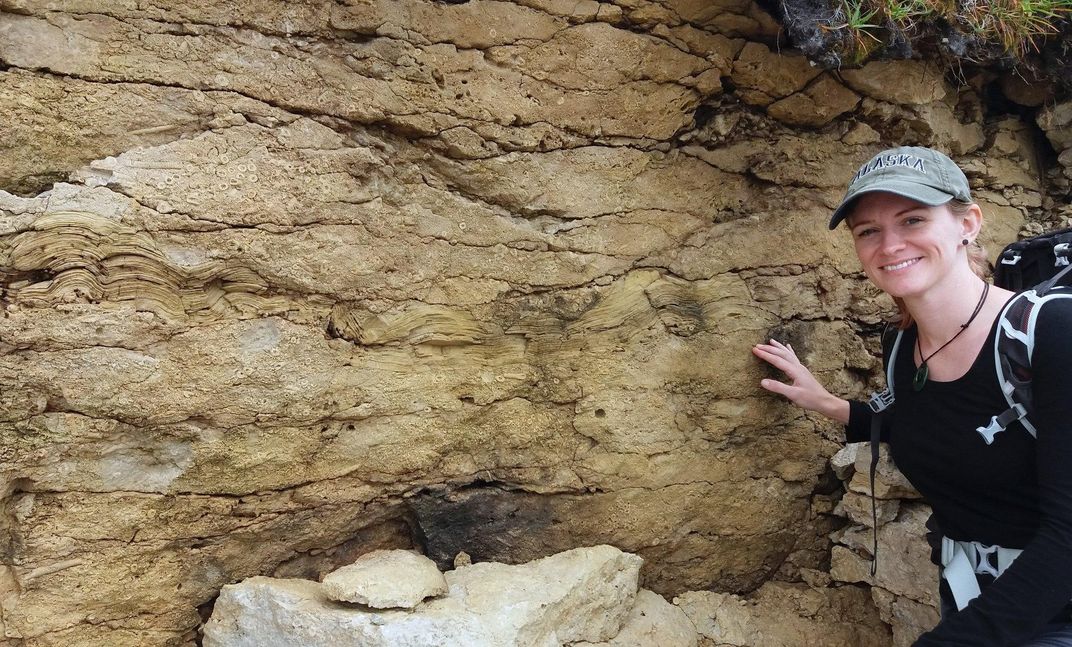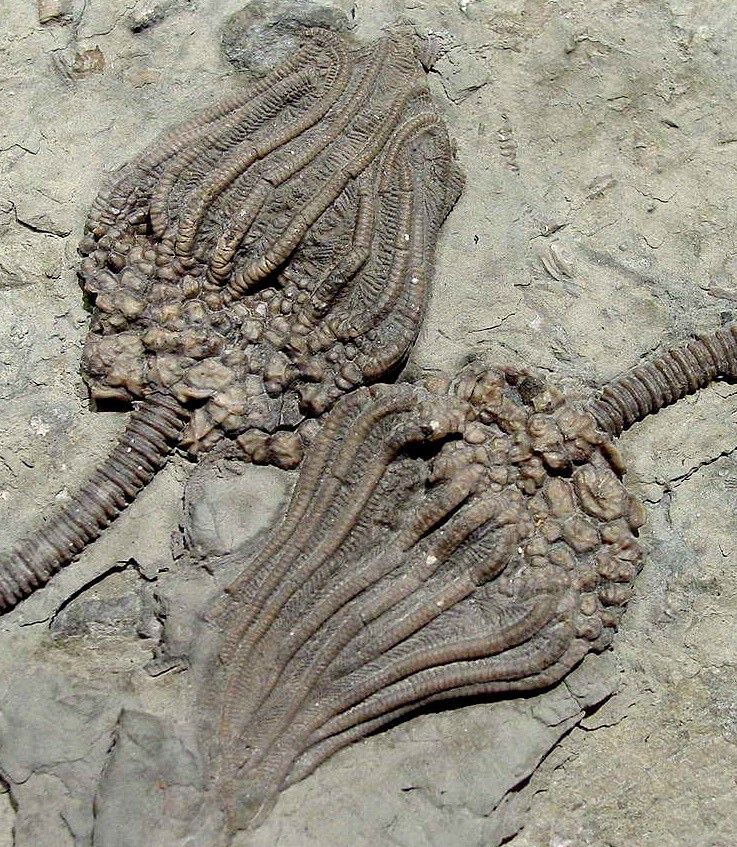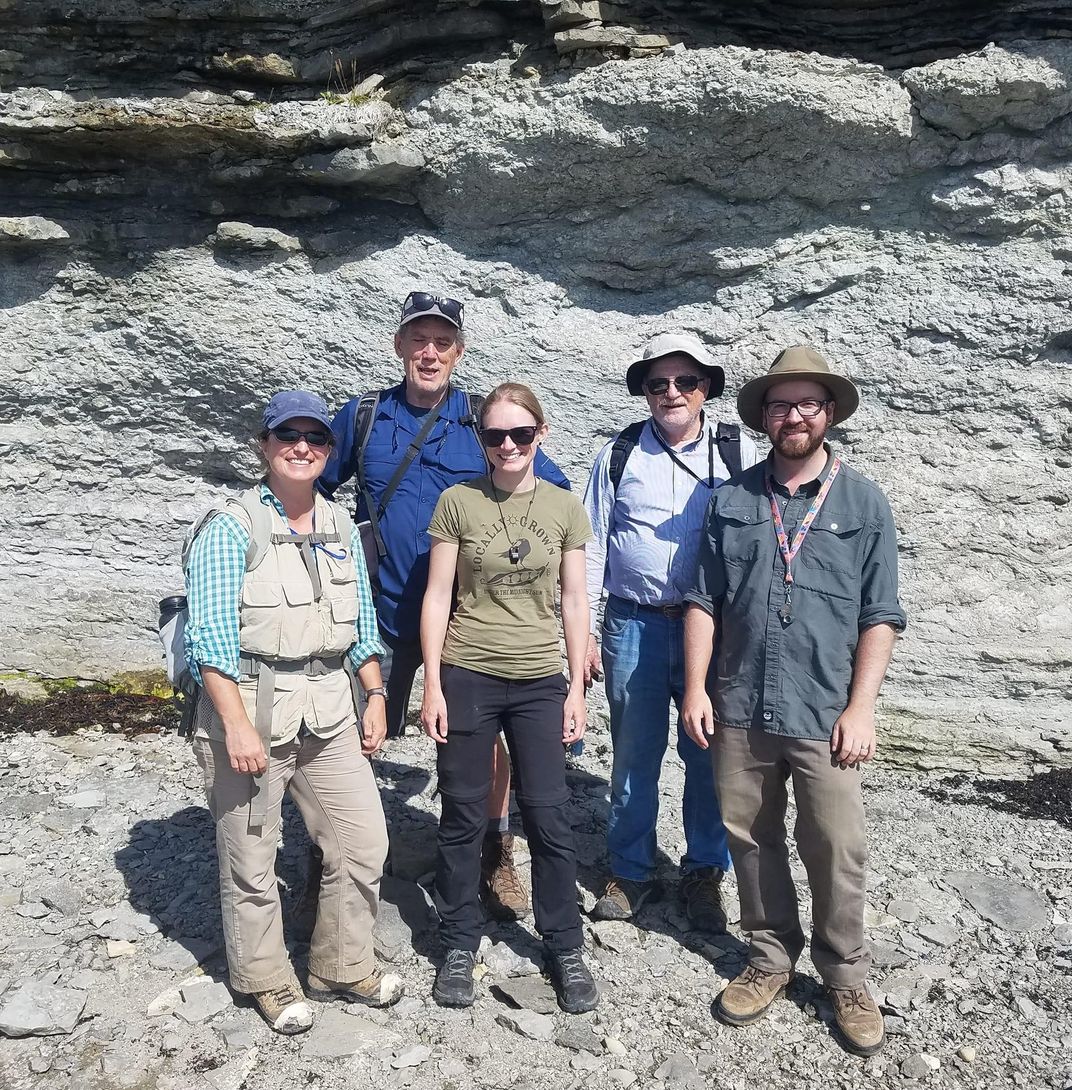NATIONAL MUSEUM OF NATURAL HISTORY
Meet the Scientist Using Fossils to Predict Future Extinctions
Selina Cole has dedicated her career to understanding the emergence and disappearance of species throughout Earth’s history.
:focal(1243x856:1244x857)/https://tf-cmsv2-smithsonianmag-media.s3.amazonaws.com/blogging/featured/A_person_holds_a_fossil_above_an_open_cabinet_drawer..jpg)
When Selina Cole took her first paleontology class in college, she knew she had found a new passion. “That gave me the first perspective I’d ever been exposed to of adding the element of time to the study of life,” she said. Since that defining moment, Cole has dedicated her career to understanding the emergence and disappearance of species throughout Earth’s history.
Now, she is the Smithsonian’s newest paleontologist, having joined the National Museum of Natural History as curator of fossil crinoids and other marine invertebrates. We caught up with Cole to talk about discovering new species in the fossil record and using the past to learn about the future.
You started at the Smithsonian in late September. What are you most looking forward to about working here?
The Smithsonian has the largest collection in the world of the specimens that I work on: fossil crinoids. I've been coming to the museum since I was a graduate student to collect data for my dissertation and research, and I was lucky enough to do a year-long postdoctoral fellowship here a few years ago. It's pretty spectacular to actually be working here now.
The Smithsonian is also such an incredible intellectual environment. There are so many people doing research on unusual and amazing subjects. Not only do I get to talk to scientists and the public about my own research, but I also get to learn about subjects outside of what I work on.
What are crinoids, and why do you study them?
Crinoids are a group of echinoderms related to animals like starfish and sea urchins. They're structured a bit like a starfish, if you flip it upside down and then put it on a stick. Most fossil crinoids had a stem and arms that they would hold up into the water and use to filter out food particles — similar to corals.

One fascinating thing about crinoids is that the size and type of food particles they eat is dictated by the structure of their arms. This allows us to reconstruct crinoid feeding ecology just by looking at physical traits of their skeletons. For many fossil groups, it’s challenging to decipher how they fed, but with crinoids, we can see that.
Crinoids originated during the earliest part of the Ordovician about 485 million years ago. That’s almost twice as old as the earliest dinosaurs, and they're still alive in oceans today. So we have this incredibly long fossil record of almost half a billion years which allows us to study the evolution and extinction of crinoid species over this massive length of time. They have a really diverse fossil record, too. There are around 8,000 species of crinoids that have been named just from the Paleozoic — from 542 million years ago to 251 million years ago — and there are even more from recent geological periods.
The ecology, diversity and exceptional fossil record of crinoids makes them excellent study subjects for my research, which focuses on evolution, extinction and ecology through time.
How do you use the fossil record?

The two major things that I study are extinction and ecosystem evolution. A lot of people are familiar with the idea of mass extinctions, where huge numbers of organisms go extinct over short periods of time. Much of my research has focused on trying to better understand why some things go extinct and others don't. Why do we have the animals and plants today that we do? Why don't we have certain plants and animals that lived in the Cretaceous or the Ordovician or other time periods? This relates back to this idea of “extinction selectivity,” where some organisms are more susceptible to extinction than others.
In my research, I look at mass extinction events — as well as the time in between — to determine why some organisms went extinct while others survived. This is important today because there are currently elevated rates of extinction due to things like climate change, habitat destruction, and introduction of invasive species.
By studying what survived mass extinctions in the fossil record, we try to better understand which modern species are at the greatest risk of extinction and which are perhaps better able to cope with challenges. We also look at how ecosystems respond to and recover from extinctions.
You’ve described 23 new species, 10 new genera and a new family of crinoids. Do you have any favorites?
My favorites are probably some that colleagues and I described from Ontario, Canada. One of the most amazing is called Priscillacrinus elegans, which was a new genus and species. The specimen we used for description is really beautiful and actually includes two crinoids side by side.

You hinted at this already, but what can paleoecology tell us about life now?
We usually think of biological communities as three-dimensional structures, where we look at what organisms are where, how things interact and what eats what. With paleoecology, we add the dimension of time. We can see how communities change in response to things that can't be simulated in experiments. Long-term modern ecology experiments tend to run on a scale of 10s of years, but the fossil record goes back millions and millions of years.
So, paleoecology allows us to look at how ecosystems respond to major perturbations — climatic warming or cooling, loss of oxygen in oceans, extinctions, major evolution of new predators or new ecological strategies — over millions of years.
The fossil record also allows us to create a baseline for understanding extinction. There are normal rates of extinction. Things go extinct all the time for natural reasons, but that is not necessarily the case for species today. Using the fossil record, we can compare modern rates of extinction to past mass extinctions to see when we will hit — or whether we’ve already hit — a critical point that makes it a mass extinction. From these comparisons, we know that current rates of species loss are at least rapidly approaching those of past mass extinctions.
So overall, the fossil record can help us understand: first, how big of a crisis is the current extinction? And second, if we could stop it now or at some point in the future, how long would it take for ecosystems to recover, given a certain amount of species loss or habitat loss? Paleontology gives us deep-time perspectives for addressing these issues by allowing us to target species or habitats for conservation, evaluate recovery times, recognize resilient communities and evaluate the health of our biosphere more comprehensively.
You’ve done some of this work with students. What are your goals as a mentor?
I’ve had the opportunity to work with several amazing students. As a mentor, my goal is to provide hands-on research experiences that will lead to a deeper understanding of the scientific process. We focus on active research questions relating to extinction and evolution, and in my experience, students find these projects exciting because they’re actually contributing new information to science.
Another goal of mine as a mentor is to create a diverse, inclusive and supportive learning environment. Unfortunately, diversity is especially poor in the geosciences. It’s important to think critically about what it is about this field, in particular, that has made it a less-welcoming environment and how we can better accommodate a diverse academic body. This includes things like reevaluating recruitment criteria for student research opportunities and making field courses more accessible to differently abled students. Everyone should have the opportunity to pursue science, and the field is enriched when people from all backgrounds and ethnicities are able to fully participate.
Do you have any advice for future or early career scientists?

Academia is challenging, but having enthusiasm for what you work on really, really helps. It’s also important to surround yourself with good mentors, peers, and colleagues who are enthusiastic and supportive. Having people around you who constantly encourage you and build you up reminds you why you're there: to learn new things.
Meet a SI-entist: The Smithsonian is so much more than its world-renowned exhibits and artifacts. It is a hub of scientific exploration for hundreds of researchers from around the world. Once a month, we’ll introduce you to a Smithsonian Institution scientist (or SI-entist) and the fascinating work they do behind the scenes at the National Museum of Natural History.
Related Stories:
Get to Know the Scientist Discovering Deep-Sea Squids
What A 1000-Year-Old Seal Skull Can Say About Climate Change
Get to Know the Scientist Reconstructing Past Ocean Temperatures
Meet the Scientist Studying How Organisms Become Fossils

